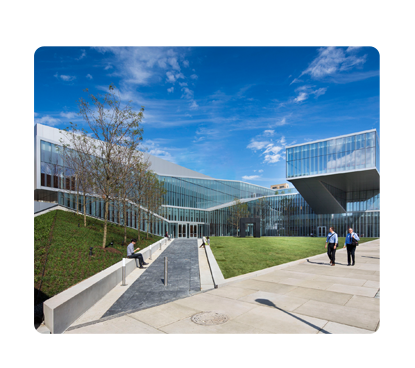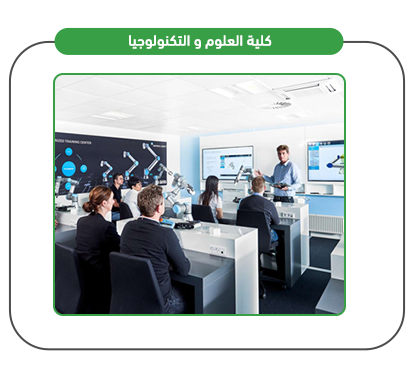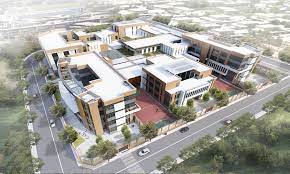The feasibility study for the College of Science and Technology aims to assess the viability of establishing a specialized institution that meets the growing demand for scientific and technological competencies. The study includes a comprehensive analysis of the economic, social, and technological factors influencing the success of the project, with a focus on identifying the various labor market needs. The study covers the evaluation of necessary infrastructure such as buildings, laboratories, and equipment, with an estimation of the costs associated with the establishment and operation processes. It also defines the criteria for selecting faculty and technical staff to ensure the quality of the educational process, in addition to developing a curriculum plan that aligns with global academic standards. On the financial side, the study estimates potential revenue from tuition fees, along with an analysis of operating costs to ensure the sustainability of the project. It also includes the development of a comprehensive financing plan and a timeline for executing the project phases efficiently. The importance of the feasibility study lies in providing a clear vision of the strengths and potential challenges, helping to make strategic decisions that contribute to the project’s success and ensuring its educational and developmental goals are achieved.

The Science and Technology College project is a strategic investment aimed at preparing qualified personnel who keep up with scientific advancements and contribute to sustainable development. The college seeks to create an environment that fosters research and innovation by offering specialized academic programs that blend theoretical and applied sciences, ensuring that students acquire practical skills aligned with labor market needs.<br>The importance of the project lies in several aspects, primarily graduating specialists qualified in fields experiencing growing demand both locally and globally, in addition to supporting innovation and entrepreneurship by providing an academic environment that encourages students to develop creative solutions. The college also contributes to community development by producing research that addresses urgent issues and enhances international cooperation by establishing academic and research partnerships with global institutions. This greatly facilitates the exchange of expertise and raises the level of education and scientific research.<br>Thus, the project represents a significant step toward building an advanced educational system that supports the transition to a knowledge-based economy and strengthens the country’s position in the scientific and technological arena. If you are interested in investing in this successful project, contact the experts at “Mashroo3k” to receive an unmatched feasibility study for the Science and Technology College at a competitive price.



A diverse range of academic programs covering multiple disciplines.
Focus on practical application through laboratories and research projects.
Qualified and experienced teaching staff.
Encouragement and support for scientific research.
Strong relationships with the industrial sector to provide training opportunities.
A stimulating learning environment that promotes creativity and innovation.
Development of personal skills such as teamwork and critical thinking.
Meeting labor market needs with well-qualified graduates.
Contributing to solving societal problems through research.
Achieved through conferences and workshops.
Executive summary
Study project services/products
Market Size Analysis
Risk Assessment
Technical study
Financial study
Organizational and administrative study

The Education Sector in GCC Countries
Because “Mashroo3k” Economic Consulting and Market Research Company believes in the importance of the education sector and its role in localizing national labor, it presents below the key indicators of the educational sector in GCC countries, thereby encouraging investment in this vital sector:
The total number of students in the Early Childhood Development stage (including nurseries and kindergartens) in GCC countries, according to the latest available statistics, reached 851.5 thousand students.
The number of school education students in the GCC was estimated at 9.3 million students (79.4% in the public sector and 20.6% in the private sector).
The number of adult education center learners was estimated at 181,247 students.
The number of higher education students was 2,206,446 students.
The number of early childhood education teachers was 50,647 teachers.
The number of school education teachers was estimated at 727,904 teachers.
There are 5,806 educational institutions operating at the early childhood stage.
There are 32,310 educational institutions operating at the school education stage.
Over the past years, governments in GCC countries have sought to bridge the gap between education and the labor market. They have adopted curricula that increase the share of vocational and technical education and encourage learning through modern media and technologies. It is also worth noting the increase in government spending by these six countries on education and its quality to graduate generations that meet the private sector’s labor needs.
According to the latest statistics:
Saudi Arabia spends 18.9% of its budget on education.
The UAE spends 14.8%.
Oman spends 12.2%.
Bahrain spends 9.8%.
Kuwait spends 12.3%.
Qatar spends 10.5% of its budget on education.
By the year 2023, the value of the private education market in GCC countries is expected to reach $26.2 billion.
The Global Education Sector:
The size of the global educational services market reached approximately $2,882.52 billion by the end of 2021, and global experts expect it to reach $3,191.79 billion by the end of 2022 — achieving a compound annual growth rate (CAGR) of 10.7%.
By 2026, the market value is projected to increase to $4,623.90 billion, achieving a CAGR of 9.7% over the forecast period.

By 2030, the global value of education as an industry is expected to reach $10 trillion USD.
By 2024, the global online education market is projected to reach $247.46 billion USD.
The AI-powered education market is expected to expand at a compound annual growth rate (CAGR) of 36% from 2022 to 2030.
In the year 2000, the number of pupils worldwide was approximately 657 million, and this number increased to 739 million by 2019.
In 2000, the number of secondary education students was around 452 million, rising to 601 million by 2019.